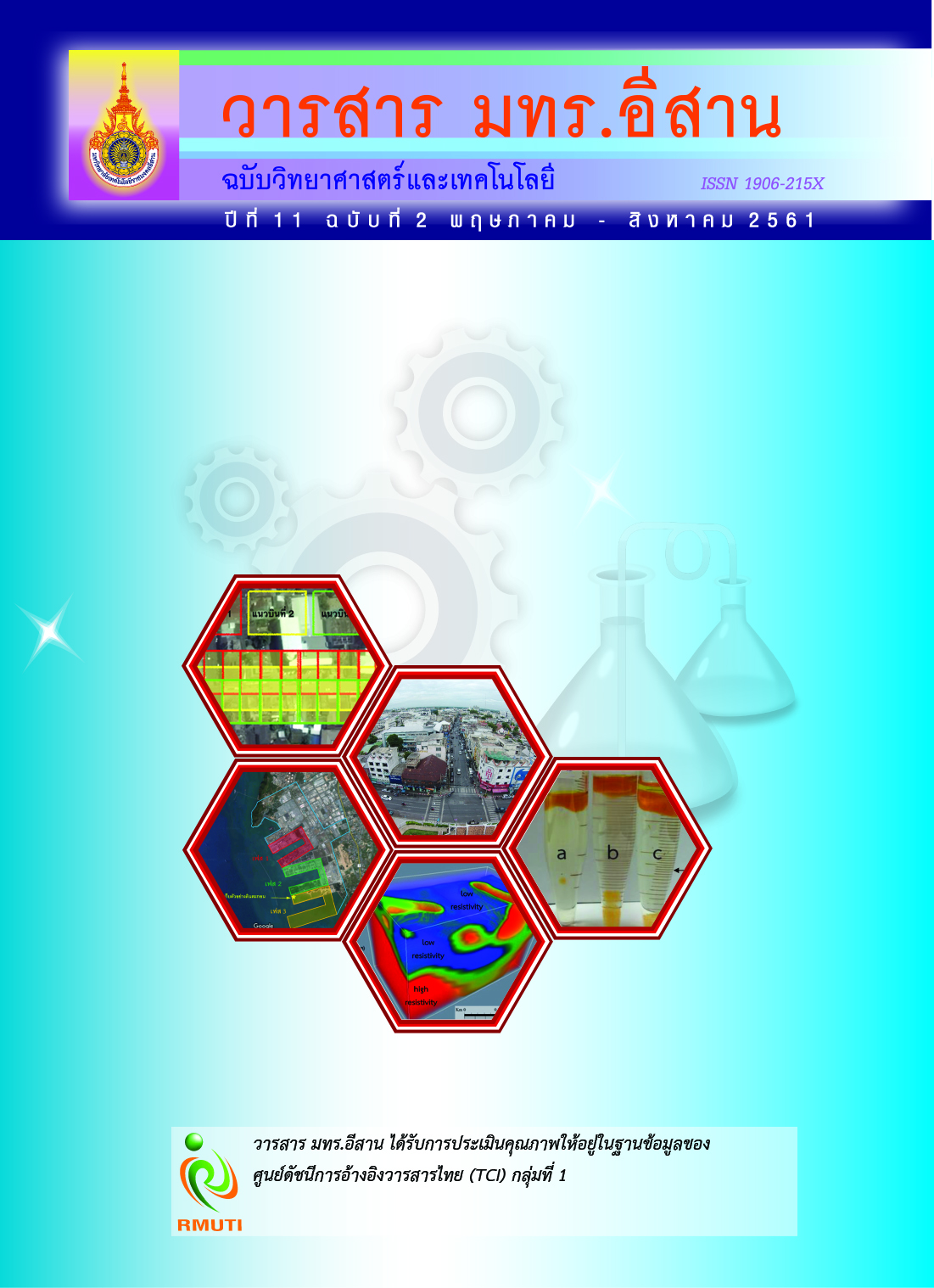Intensity of Natural Indigo Dyed Cotton Fabrics with UV Protection
Main Article Content
Abstract
The objectives of this research are the following 1) study fabrics structures, physical properties and color values of natural indigo dyed cotton fabric with different color intensity and 2) compare the effectiveness in UV protection of the fabrics samples. The experimental dying of filling rib with natural indigo at different dyeing repeats (1, 5 and 9 times) was then measured for thread count, fabric thickness, air permeability, color values and effectiveness in UV protection. It was found that the fabrics samples with similar warp yarns per inch and thickness, slightly different form filling yarns per inch but much different air permeability. Concerning the color values, it was found that the fabrics samples had quite dark and bright blue color; the L* value decreased when the number of repeated dyeing increased. The effectiveness in UV protection of the tested fabrics were at very good levels. Moreover, it was found that the numbers of repeated dyeing significantly affected the UV-A transmittance % at the 0.01 level and affected the UV-B transmittance %, the UV-A blockage % and the UV-B blockage % at the 0.05 level.
Article Details
References
[2] Wittayanartphaisarn, S. (1999). Scientist’s Warning of Dangers from Ultraviolet. Access (3 February 2009). Available (https://www.doctor.or.th/article/detail/4327) (in Thai)
[3] Yanumet, N. and Trakoonwichian, S. (2009). Development of Ultraviolet - Protecting Cotton. Chula Samphan. 52th Year. Vol. 52, No. 2, pp. 2-5 (in Thai)
[4] Textile Analysis and Test Center, Institute of Textile Industry Development. (2009). Comfort in Wearing Textiles and Clothes. Colorway. Vol. 15, No. 83, pp. 19-21 (in Thai)
[5] Seangwattanarote, U. (2003). UV Protecting Clothes. Cut and Sew. pp. 24-26 (in Thai)
[6] Glover, B. and Pierce, J. R. (1993). Are Natural Colorants Good for Your Health?. Journal of the Society of Dyers and Colourists. Vol. 109, Issue 1, pp. 8-9. DOI: 10.1111/j.1478-4408.1993.tb01491.x
[7] Sarkar A. K. and Seal, C. M. (2003). Color Strength and Colorfastness of Flex Fabric Dyed with Natural Colorants. Clothing and Textiles Research Journal. Vol. 21, Issue 4, pp. 162-166
[8] Thawanwichajit, Ng. (2007). Natural Indigo Dying in Accord with Local Wisdom. Colorway. Vol. 13, No. 71, pp. 35-36. (in Thai)
[9] Pupatana, O. (2013). Effectiveness in UV (ultraviolet) Protection of Cotton Fabric Dyed with Natural Indigo (Indigofera Tinctoria Lin.). Doctorate Degree Thesis, Faculty of Agriculture. Kasetsart University
[10] Hewsuengchareon, A. (2007). Mixed Natural Colors for Hand-Made Cotton (Part 1). Colorway. Vol. 13, No. 70, pp. 49-50. (in Thai)
[11] Ali, S. I. (1993). Revival of Natural Dyes in Asia. Journal of the Society of Dyers and Colourists. Vol. 109, Issue 1, pp. 13-14. DOI: 10.1111/j.1478-4408.1993.tb01494.x
[12] Kongdee, A. and Chaichanawong, A. (2009). A Study of the Effects of Altrasonic Technique on Color Properties of Silk Dyed with Natural Dye. Colorway. Vol. 15, No. 83, pp. 57-64
[13] Mut-iw, C., Piromthamsiri, P., and Kongkachuichay, P. (2012). Inhibition of Bacteria from Some Kinds of Natural Dyes on Cotton. Journal of Home Economics. Vol. 55, No. 2, pp. 4-12
[14] Khuentham, A. (1999). Principles of Experiments Planning. Department of Statistics. Faculty of Science. Kasetsart University. Bangkok
[15] Seangwattanarote, U. (2003). UV Protecting Clothes. Cut and Sew. pp. 24-26


